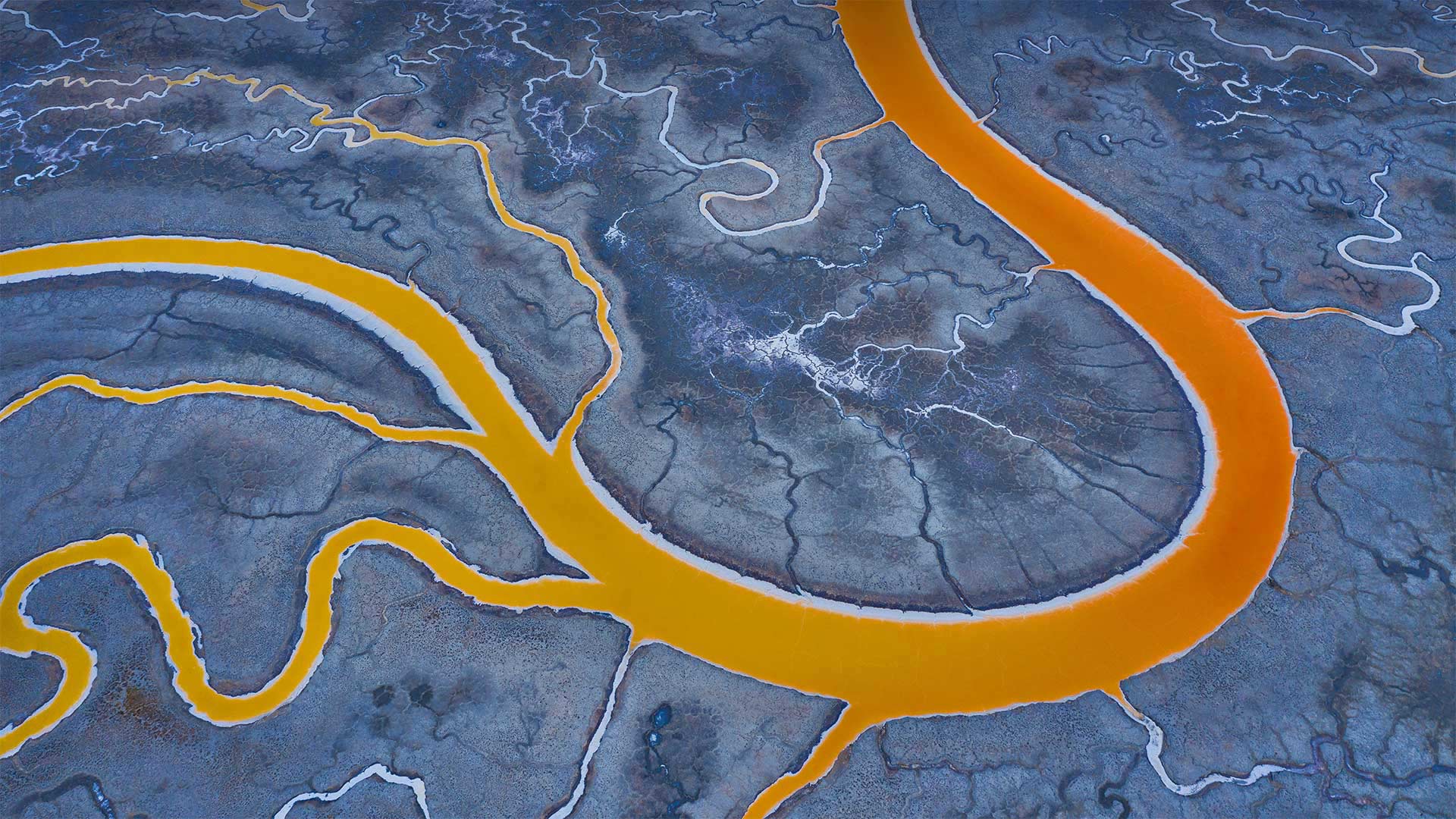标签 盐滩 下的文章
旧金山湾的盐滩 Salt flats in San Francisco Bay (© Jeffrey Lewis/Tandem Stills + Motion)

旧金山湾的盐滩 Salt flats in San Francisco Bay (© Jeffrey Lewis/Tandem Stills + Motion)
一个咸咸的地点 A salty situation
San Francisco Bay salt flat
You might be wondering where the volcano is in today's photo, but that's not lava. These are salt evaporation ponds in San Francisco Bay. If you happen to be in the air and flying over this part of the country, you'll notice not just the bright orange but various greens and blues and even magenta pools that are part of the famous salt ponds. The vibrant colors are determined by brine shrimp, algae, and other microorganisms and their responses to different levels of salt. This orange results from about a mid-level saline concentration and the presence of tiny brine shrimp in the water. Green indicates low levels of salt, while pink or red are signs of high salt content in an algae-rich pond.
When Spanish explorers and missionaries arrived in the area in the late 18th century, members of the Indigenous Ohlone people were already extracting salt from the naturally occurring ponds. The California Gold Rush (1848–1855) brought waves of settlers to the region, and salt became one of San Francisco's largest industries. Roughly 80% of the wetland was eventually lost to salt mining, landfill, or other industrial alteration. But since 2003, many of these tidal flats have been acquired by federal and state agencies as well as private foundations to be restored to their original state. The restoration process will take decades, but even as the wetlands are being restored, about half a million tons of sea salt are harvested from the ponds every year.
旧金山湾盐滩
你可能想知道今天照片中的火山在哪里,但那不是熔岩。这些是旧金山湾的盐蒸发池。如果你碰巧在空中飞过这个国家的这一地区,你不仅会注意到明亮的橙色,还会注意到各种绿色和蓝色,甚至是品红池,它们是著名盐池的一部分。鲜艳的颜色是由盐水虾、藻类和其他微生物及其对不同盐含量的反应决定的。这种橙色是由于大约中等浓度的盐水和水中存在微小的盐水虾造成的。绿色表示含盐量低,而粉色或红色表示富藻池塘的含盐量高。
18世纪末,当西班牙探险家和传教士抵达该地区时,当地的奥隆人已经在从天然池塘中提取盐。加利福尼亚淘金热(1848-1855)为该地区带来了一波又一波的定居者,盐业成为旧金山最大的产业之一。大约80%的湿地最终因盐矿开采、填埋或其他工业改造而消失。但自2003年以来,联邦和州政府机构以及私人基金会收购了许多这些潮滩,以恢复其原始状态。恢复过程将需要几十年,但即使湿地正在恢复,每年从池塘中收获约50万吨海盐。